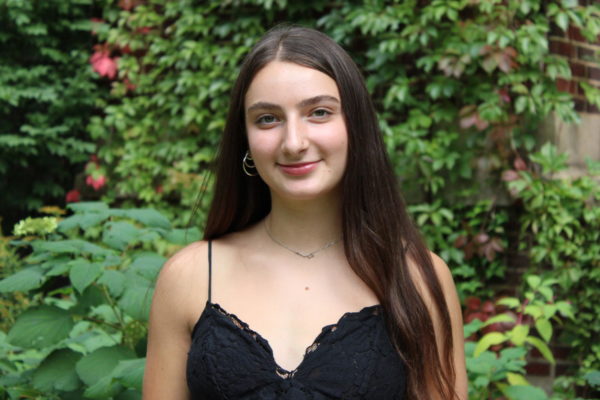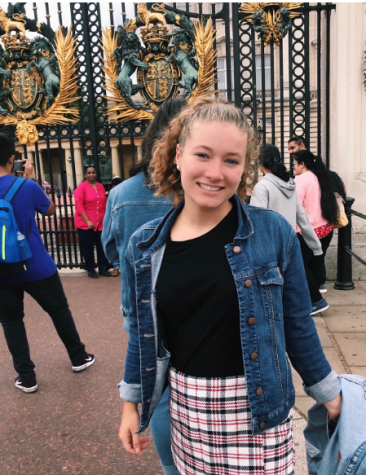Students, staff examine e-learning
On Aug. 16, nearly 4,500 students and staff members entered the building for the first day of the 2021-2022 school year, a large percentage of which hadn’t physically set foot in school since March of 2020, prior to the COVID-19 pandemic.
Both staff and students highly anticipated the return, finally clicking the resume button after being stuck on pause for far too many months.
That said, the switch to full-day, in-person classes, five days a week, requires major adjustments and flexibility. Every student, despite their age and experience at ETHS, is the product of a pandemic school year, and, because of this, several changes have recently been implemented in hopes of “rehumanizing” the school; the administration’s latest take on improving the social and emotional well being of each student.
“ETHS is returning to a space that rehumanizes our school community. Throughout the 2021-22 school year, ETHS will work to build relationships and a sense of belonging,” writes Principal and Assistant Superintendent Marcus Campbell in an email sent to ETHS families on June 23. “We will create community in the classroom even before teaching academic content begins. These efforts will be embedded throughout the year in the curriculum and how we engage with students and each other.”
At ETHS, both staff and students alike have associated the beginning of the school year with the term “stressful”. Leading up to the first day, history and social sciences teacher Yosra Yehia felt a combination of excitement and nervousness. However, the majority of her worries were settled as soon as she observed how enthusiastic her students were.
“I had so many expectations, and I thought that it would take a lot of time to learn how to speak to one another again, in a physical space at least, but I feel like students have been holding on to so much for the past year that they really do want to debrief in a community and look forward to hearing and building on their classmates’ ideas,” she shares. “In my classes this year, I’ve noticed that students are more willing to talk and discuss in a large group.”
A somewhat significant change in the scheduling format, made to deepen learning in classes, has resulted in mixed reactions from ETHS students and teachers. Beginning last year, ETHS made the decision to switch from the shorter class periods that students used to attend Monday through Friday to a block schedule. Rather than 42 minute periods, students attend classes every other day where blocks are 85 minutes in length. This alteration remained in place through the entirety of last school year and has transferred into this year, for a variety of reasons.
“With a block schedule, it’s always a pleasant surprise to realize that, at 1:00, all I have left is lunch and one class, while in previous years I might have had three or four more classes,” says senior Ella Greenberg-Winnick.
Not only does the block schedule give a seemingly more calm feel to the day, but it is more effective in relation to students’ mental health.
“I think that the block schedule is much more effective for learning and better for students’ well-being. Having two days to complete all homework has been very stress relieving and gives more time for extracurriculars,” says freshman Tait Hansen. “Also, having 85 minutes for each class ensures that all students fully understand each topic.”
From an academic standpoint, Yehia appreciates the block schedule for its room for growth.
“It has definitely encouraged me to be more creative with that time and has created opportunities for content to be engaged with in different ways throughout the block,” Yehia shares.
On the other hand, some students argue that the scheduling change has resulted in a disorganized classroom environment.
“I have teachers who don’t really understand how pace should change and how the schedule should look, so it sort of becomes an issue in terms of class time management from the teachers,” says junior Margo Anderson. “This isn’t an accusation; it’s just we’re all not used to it, so it feels like at times my teachers don’t really read the room and they don’t know what to do with 85 minutes of class time.”
For other students, not attending each of their classes every day has led to a lack of repetition in specific areas that require consistency in order to succeed.
“I think it’s good to practice certain things every day like orchestra and Spanish. Language is an ongoing process, and it’s good to interact with the language every day and speak with people. That’s something we definitely missed during the pandemic,” junior Kelsey Blickenstaff expresses.
In addition to the scheduling change, passing periods between classes have doubled in length, from five minutes to ten minutes. While it may not seem like much, this slight change may just be the ideal method to successfully “rehumanize” the school.
“The ten minute passing periods make it so I’m not stressed, rushing to my next class, especially if the bell rings and I am trying to finish something up. Also, it gives me time to socialize and go to the bathroom,” freshman Olivia Glantz shares. “I am able to refocus and wake up after a long block class.”
Coming into its final year of high school, the class of 2022 is the only class that has experienced one full year of in-person learning at ETHS. Although their high school experiences were altered, seniors are keeping high spirits for their final year during the block schedule.
“It’s nice to have days that feel so distinctly different from each other because it minimizes the monotony of school,” says Greenberg-Winnick. “Instead of having five identical days in a week, there’s two sets of them, so the week goes by more quickly. It’s also really nice for distributing homework, because students have more time to work on each assignment.”
A large percentage of the staff and student body have expressed their optimism towards a productive and memorable school year.
“Overall, the first few weeks have been really great. It has definitely been a transition, but a very positive one,” Yehia shares. “It is really nice to finally see students again and be in the building and physical work space.”
Your donation will support the student journalists of the Evanstonian. We are planning a big trip to the Journalism Educators Association conference in Philadelphia in November 2023, and any support will go towards making that trip a reality. Contributions will appear as a charge from SNOSite. Donations are NOT tax-deductible.











